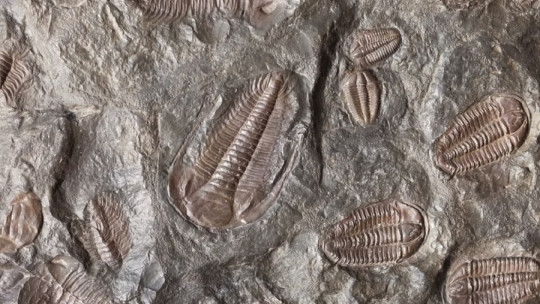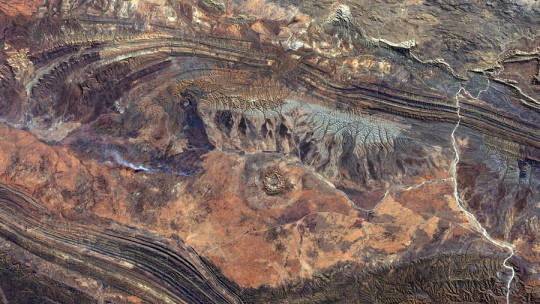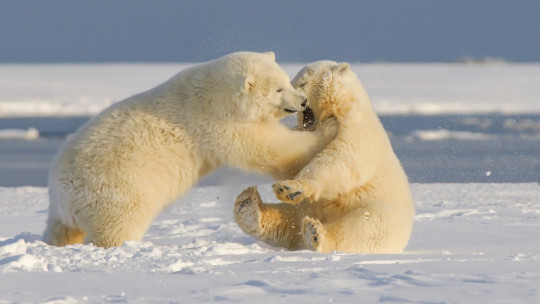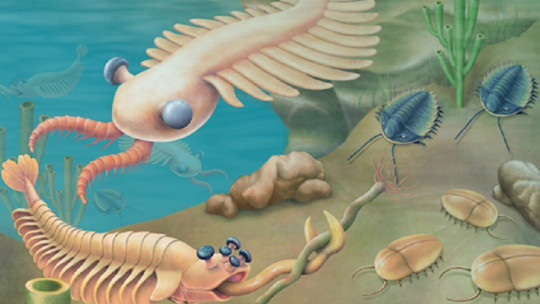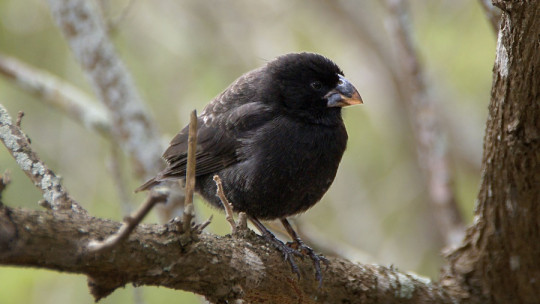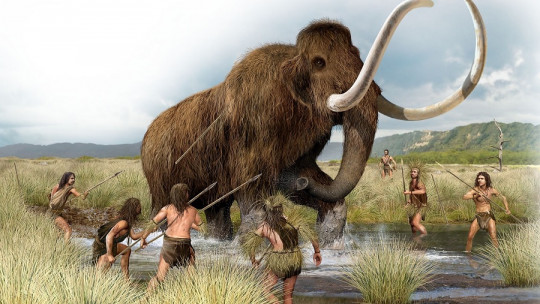
Geological time scales allow us to place our existence at a specific point and, in addition, to know what the life of our ancestors and the first living beings that inhabited the Earth was like.
Although human beings have transformed this planet to our liking and needs, the reality is that the Earth is inconceivably old, since its origin is placed 4,543 billion years ago. We are not even capable, as a species, of imagining such a broad time scale.
Life emerged about 3.5 billion years ago, causing various radiations through processes of speciation and evolution, which has led us to almost a million and a half animal species described today (although it is estimated that there are more than 7 million). The genus Homo (to which we belong) appeared approximately 2.5 million years ago changing the destiny of our planet irremediably.
When we talk about geological epochs and periods, we usually go back to the Cambrian and its explosion of aquatic species shaped like alien crustaceans, or to the Jurassic and the dominance of dinosaurs and beings of unthinkable sizes. What is rarely explored, due to its proximity to current events, is the Holocene, the era in which you and I find ourselves Do you know what surrounds us on a temporal level and what lies ahead for us as a species? Here we tell you.
What is the Holocene?
The Holocene is a division of geological time scale, the last (and current) epoch of the Quaternary period The Holocene is an era included in the Quaternary period, which in turn is part of the Cenozoic Era. To understand all these terms a little better, we will exemplify this division with a small diagram.
Cenozoic era: It began about 66 million years ago and continues to the present day. It is the third (and last) era of the Phanerozoic eon.
Maybe with this small list it has become clearer, right? The only human species that has lived throughout the entire Holocene is the Homo sapiens and, during it, as a society we have developed language, agriculture and, in short, the civilization on which all the bases of our survival are based. Unfortunately, all these advances have not come without the consequent ecosystemic detriments, as we will see in later lines.
Characteristics of the Holocene
Approximately 11,700 years have passed since this era began until these lines began to be written, so it is a bit complex to summarize everything that has happened in this time interval without covering several volumes of an encyclopedia. Even so, we will make the effort to give you a general overview of it.
On a geological scale and taking into account the age of the Earth, about 12,000 years is quite short. For this reason, it is considered that the tectonic movements (continental drift) that have determined the study of other stages here are almost negligible: less than 1 kilometer, an irrelevant figure. However, it is necessary to take into account that The Holocene began after the last ice age, a type of climate phenomenon that dominated during the Pleistocene
Since all that ice had to go somewhere with the rise in temperatures, at the beginning of this era sea level rose by about 35 meters in height and 120 meters since the last glacial maximum, around 20,000 years ago. This change was not gradual, but occurred in the form of “pulses.” It is interesting to know that, in addition, we are in an interglacial period, so it is not at all ruled out that in the future the Earth will once again suffer massive glaciation (as has already happened on other occasions).
Evolution is not a mechanism that generally works at a dizzyingly fast pace, so we can say little about changes in flora and fauna. Although during these more than 10,000 years many species have become extinct, at the ecosystem level what has been most notable have been the changes in the distribution of taxa in different areas of the Earth, largely due to human action. In any case, it is known that Large mammals prepared for life in the snow (mammoths and saber-toothed tigers, among others) disappeared between the end of the Pleistocene and the beginning of the Holocene
Since we do not have reliable fossil faunas to cling to (since there is no marked difference in living beings compared to today), the Holocene is measured based on the different stages of humanity’s development. The beginning of this period corresponds to the European Mesolithic era, where the last hunter-gatherer human societies took place, primarily nomadic in nature. From here on, the story writes itself.
Holocene or Anthropocene?
To continue making an impartial historical tour of the Holocene without touching on certain issues, no matter how thorny they may be, would be to miss the truth. We must recognize it: the expansion and development of the human being has been exchanged for the well-being of planet Earth in exchange for progress. Thus, At the beginning of the 21st century, a part of the scientific community proposed the term “Anthropocene” to replace the era in which we supposedly find ourselves, the Holocene.
Most ecologists, zoologists, conservationists (and scientists in general) agree on one thing: we are at the foot of a mass extinction that is advancing in a terrifying way. The current extinction rate is approximately 100 to 1,000 times higher than what is expected for Earth at an evolutionary level. Not even the worst episodes are comparable to today, since living beings are currently disappearing on a scale (at least) 10 times greater than any past catastrophic period that you can think of.
Standardizing the changes that the Earth is undergoing is complex, and therefore, An attempt is made to circumscribe the current “Anthropocene” on a base of clear and quantifiable ideas at a physical-chemical level Among the possible patterns considered, are the following:
These are some of the “markings” that could be used to define the Anthropocene at a geological level, but, without a doubt, What determines it is the mass extinction of living beings and the degradation of ecosystems The more the human species spreads, the less space for nature is available.
Without going any further, it is estimated that an average of 150-200 species of living beings disappear every 24 hours. Neither more nor less than a single day. Of all the species monitored by the International Union for Conservation of Nature (IUCN), 28% of them are threatened, about 35,500. We could continue giving devastating data, but we believe that the idea is more than clear: the Holocene or Anthropocene is characterized by human progress, but at the same time it implies the death and destruction of the planet as we know it.
Summary
After the data presented here, it is difficult to end on a positive note. The Holocene is characterized by human progress, with the negative and positive that this entails During this period we have created language, and thanks to it, we have learned to name love, affection, affection and empathy. We have also traveled to the moon and discovered many secrets of the world around us, since, without the human species, the term “knowledge” surely would not have even taken shape.
In short, our species is capable of the most beautiful things and the worst crimes at the same time, and the events recorded throughout the entire Holocene exemplify this perfectly. Only time will tell where civilization and the Earth itself are headed, but, unfortunately, the current data is not encouraging at all.

